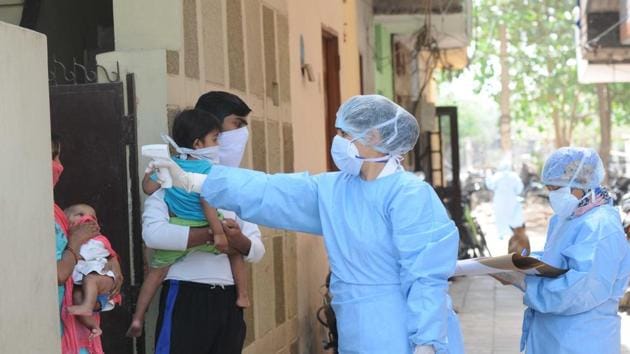Covid-19: What you need to know today
Overall, according to data from worldometers.info, the US saw the addition of 22% of its total cases as on July 30 in the period between July 16 and July 30.
According to a report by the American Academy of Pediatrics released over the weekend, the number of Covid-19 cases among children increased by 97,078 in the US between July 16 and July 20. This number, according to the report, is 29% of all cases among children reported since the start of the pandemic, and represents a 40% increase (there were 241,904 cases among children on July 16 and this went up to 338,982 by July 30). Overall, according to data from worldometers.info, the US saw the addition of 22% of its total cases as on July 30 in the period between July 16 and July 30. Clearly, infections among children (albeit on a lower base), have grown faster than in the total population (including children) in this period. The report considered children to be those under the age of 17 or 19 (although two states set the ceiling at 14 and one considered young people till the age of 24).

The American Academy of Pediatrics report is relevant in that country given the debate over the reopening of schools. For that reason, it is relevant in India, too, where, as HT reported late last week, there has been a plan for school reopenings ready for at least a month, although there has been no decision on the timing of this (some reports have suggested that it could be September 1 for students in Classes 11 and 12).
Similar data for India isn’t available. Neither the Indian Council of Medical Research nor the Union health ministry release caseload data by age groups on a regular basis. They did so once in April, but since then, while they have released data on deaths by age groups at least thrice, they have not shared details of cases. According to people familiar with the data, though, the proportion of children (those under the age of 18) in the caseload was around 8% at the end of July, when India had around 1.7 million cases. In the absence of more granular details, it is difficult to assess whether this number has been rising in recent weeks. Still, while the information isn’t in the public domain, it is available, which means the government can analyse whether cases among children have been on the rise even as India’s overall caseload has soared -- just the kind of input that should go into a decision on reopening schools. The data also shows that the majority of infections (till the end of July) were among people below the age of 45, but that the majority of deaths (till August 4), among those over the age of 45 – but that’s another story.
The issue of school openings is a controversial one around the world; it is also one that has vexed governments. Most governments believe (and justifiably so) that keeping schools closed disadvantages the already disadvantaged. UK Prime Minister Boris Johnson distilled these sentiments in an article published in the Mail on Sunday. He cited research that claimed that “the attainment gap between children from economically deprived households and their peers could widen by more than a third” and referred to UN secretary general Antonio Guterres’s comments last week about this being a “generational catastrophe that could waste untold human potential, undermine decades of progress, and exacerbate entrenched inequalities”. He added that keeping schools closed “a moment longer than absolutely necessary is socially intolerable, economically unsustainable and morally indefensible”.
All of Johnson’s observations are valid – and they are perhaps not out of place in a country that has seen a sharp fall in cases. According to the New York Times database, the seven-day average of daily new cases in the UK was 876 (on Sunday). That’s higher than the 500-level the average was at in early July, but far off peaks seen in April and May.
The reason why the issue has become as controversial as it has in the US is because the country is considering reopening amidst a clear second wave (which is just coming off its peak). India’s challenge is even tougher, and from both ends – the digital divide is real and affects many children who go to government schools and even most of those who study in private schools under the government’s Right To Education law; and the number of coronavirus disease cases in the country continues to rise. India ended Monday with 51,127 new cases, and a total of 2,263,864 cases thus far.






